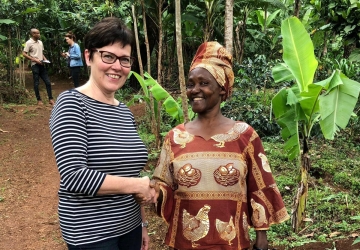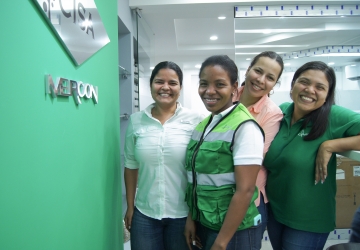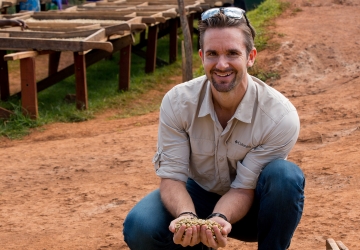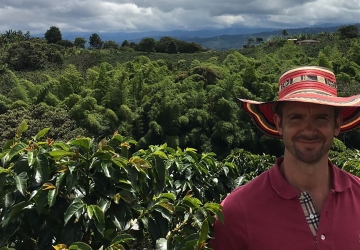Journeying with happy beans in Nicaragua
Earlier, I wrote about our visit to a Nicaraguan school that we have helped repair together with our local partner Mercon. From the school, we continued to the Los Tres Deseos coffee farm. In the home of the farmer Juan Bismark Rodrigues, several farmers from the community have gathered to meet us.
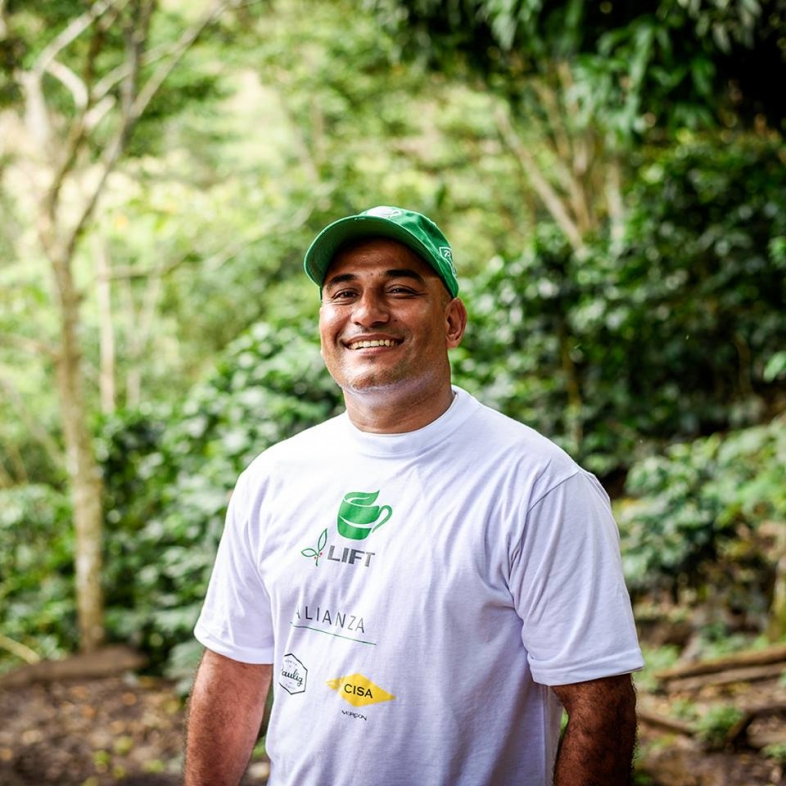
Juan Bismark Rodrigues is one of the farmers of Paulig’s farmer community in San José de la Luz.
As we walked among the coffee plants, Juan told me about how he has been developing his farm over the past few years. Many of the solutions used on small farms are simple and practical. For example, streams and other water sources are protected by vegetation and the area immediately around them is not used for farming. Juan has also arranged a sorting station on his farm so that waste can be recycled. Juan’s farm is an example for many other farmers in the area, and his voice is full of enthusiasm and humble pride when he tells me about his plans for the future.
Many farmers in Nicaragua remove the pulp around the coffee beans in mills at their own farms, and dry the beans before selling them. Juan’s mill is used by both him and a relative of his, who is also a coffee farmer. As part of our long-running cooperation with the community, we help the farmers build new mills and water purification solutions. The new mill at Juan’s farm was the first to be completed, and together with my colleagues Minna and András, I was given the honour of picking the first coffee berries to be processed in the mill.

We were given the honour of picking the first coffee berries that were to be processed in the new mill.
Coffee processing using a method where the pulp is removed from the bean before it is dried requires a lot of water. After the processing, the water needs to be treated to remove impurities such as sugars from the nutrient rich berries before it can be returned to the watercourses. In remote areas, the farmers of small coffee farms are often unable to pay sufficient attention to water purification. By building water purification solutions, we help farmers and their families influence the environmental effects of individual farms as well as the water quality in the entire community.
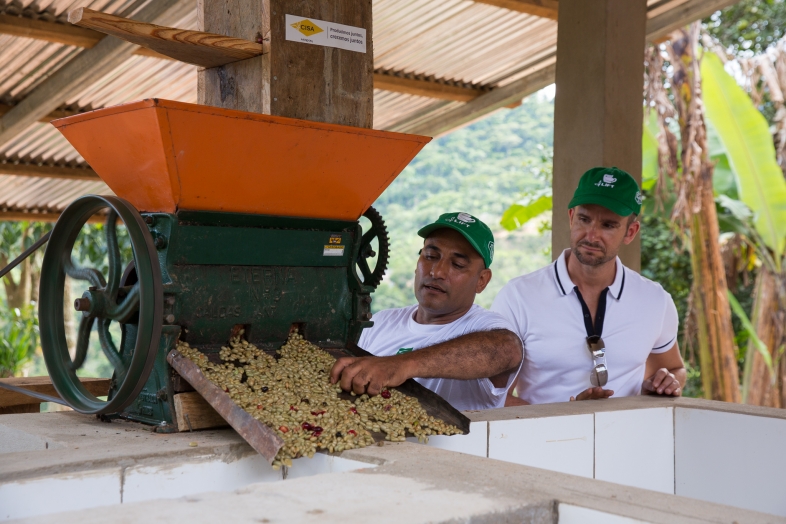
A good mill facilitates the work and produces better quality coffee.
In the community of San José de la Luz, coffee is vital, as the majority of the inhabitants earn their living by growing coffee. We want to support the entire community in order to ensure that coffee can be cultivated in the region long into the future. Through our partnership programmes, farmers are given expert advice on state-of-the-art techniques for productive and environmentally friendly farming. A course that starts after the harvest is completed addresses good farming practices such as optimal use of nutrients and thinning of coffee trees, occupational safety and soil protection. These courses often result in active exchanging of experiences among the farmers concerning the application of what they have learned as well as the spread of good practices to other farmers in the area.
We climb up to the second floor of the mill with the berries and pour them into the mill. The engine starts, and the mill quickly removes the skin and pulp of the berries. The beans fall into containers where they are allowed to ferment for a day, after which the rest of the pulp comes loose more easily and the beans are cleaned before being moved to patios to dry. In a few months’ time, the coffee will be in our Finnish cups.
Happy beans require cooperation in the entire chain of coffee. The farmers as well as the employees of the export companies and roasteries all do important work along the way. A happy value chain – happy beans!
Warm regards, Anna
Coffee facts about Nicaragua:
- Characteristic of this coffee is the large size of the beans and the sweet-soft flavour.
- Most of this coffee is cultivated in the north, near the border with Honduras.
- The coffee is typically dried on large patios under the sun.
- Coffee plants grow at a height of 800–1,200 metres.



